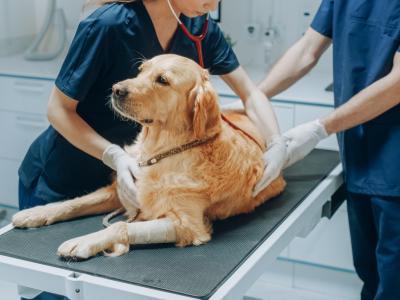Study: Docs often bend to pressure to space primary vaccines
Pediatricians and family physicians frequently face pressure from patients to spread out early-childhood vaccines and often acquiesce, according to a study today in Pediatrics.
Researchers from Colorado and the US Centers for Disease Control and Prevention sent an e-mail and mail survey to 815 pediatricians and family physicians across the country from June through October 2012. They received responses from 534, or two-thirds.
Of the respondents, 93% said that some parents of kids younger than 2 years, in a typical month, requested vaccines to be spaced further than US guidelines indicate. And 21% reported that 10% or more of the parents make that request monthly.
Most physicians said they agreed to spread out vaccines when requested, either often or always (37%) or sometimes (37%). In contrast, 2% would often or always dismiss families from their practice if they wanted to spread out the primary series of vaccines, whereas 4% would sometimes take this step, and 12% would rarely do it.
The vast majority of physicians thought parents who spaced vaccines were putting their children at risk for disease (87%) and that such a strategy was more painful for children (84%). Similar rates thought that, if they agreed to the requests from the parents, it would build trust with families (82%), and, if they did not agree with parents, families might leave their practice (80%).
Forty percent of respondents said this issue has decreased their job satisfaction. The authors conclude, "Evidence-based interventions to increase timely immunization are needed to guide primary care and public health practice."
Discussions and interventions need to begin in early in pregnancy for parents who are questioning vaccine safety and efficacy, according to a news release on the study from the University of Colorado. Social networks, public messaging, and perpetuation of strong social norms for vaccination have been shown to play an important role in shaping some parents' vaccination decisions, the release said.
Mar 2 Pediatrics abstract
Mar 2 University of Colorado press release
China confirms 6 new H7N9 cases
Six more H7N9 avian flu infections were reported in China over the weekend in three provinces, continuing the steady stream of cases there this year.
Two cases each were reported in Anhui, Zhejiang, and Guangdong provinces on Feb 28 and Mar 1.
The first case in Anhui involves a 58-year-old woman in Tongling city who was exposed to live poultry before she became ill and was diagnosed on Feb 27, according to health ministry statements translated by FluTrackers, an infectious news message board. The second patient is a 58-year-old man in Anqing city who was diagnosed as having H7N9 on Feb 28 and also had poultry exposure. Both are in critical condition.
The cases in Zhejiang involve a 6-year-old child of unspecified sex and a 7-year-old girl in Dongyang, according to a Macao government statement translated by FluTrackers. At least one of them is listed in severe condition.
In Guangdong, two men, a 36-year-old in Foshan and a 45-year-old in Dongguan, are hospitalized in stable condition with H7N9, according to a news release yesterday from Hong Kong's Centre for Health Protection (CHP).
The six cases push the global total to 622 since 2013, according to a case list maintained by FluTrackers. Almost all of the cases have occurred in China.
Feb 28 FluTrackers post on Anhui cases
Feb 28 FluTrackers post on Zhejiang cases
Mar 1 CHP news release
FluTrackers H7N9 case count
Study finds evidence of H9N2 infection in pigs, farmers in China
Low rates of antibodies to H9N2 avian flu were found in pigs and workers at pig farms in Shandong province in eastern China, according to a serology study yesterday in Virology Journal.
Chinese researchers collected 2,176 pig samples from 50 swine farms on which pigs had contact with wild birds, and they also collected blood samples from 287 workers on the farms and from 100 healthy controls in the province. Antibody titers of 40 or higher were considered seropositive for H7N9.
By hemagglutination inhibition (HI) assay, 4.9% of the pigs were seropositive, compared with 3.9% by microneutralization (MN) assay. In the farm workers, 2.1% were positive via HI assay and 1.4% by MN assay.
No H9N2 cases in the pigs and workers were detected, which indicates that asymptomatic infections likely exist, the authors noted.
A 25-study meta-analysis published a week ago in the Journal of Infectious Diseases found an overall H9N2 seropositive rate of 4.9% in people exposed to birds.
Mar 1 Virol J abstract
Feb 23 CIDRAP News scan on J Infect Dis meta-analysis











